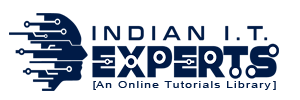What is Operating System | Window Operating System | OS
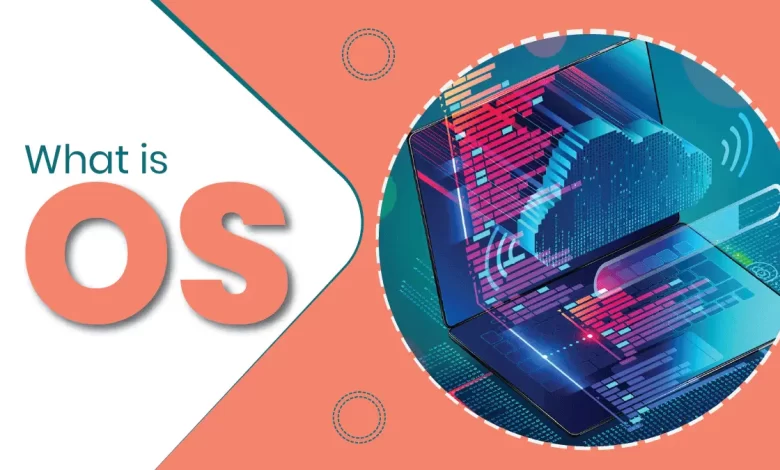
An operating system acts as an intermediary between a computer and the user of the computer hardware. The purpose of an operating system is to provide an environment in which a user can execute programs easily and efficiently. Hardware must provide suitable mechanisms to ensure the correct operation of the computer system and to prevent user programs from interfering with the proper operation of the system.
Table of Contents
What is an Operating system (OS?)
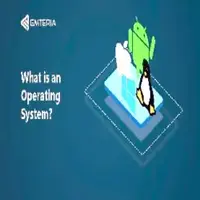
An operating system (OS) is a program that, after being in the beginning loaded into the computer by a boot program, manages all of the other application programs on a computer. The application programs make use of the operating system by making requests for services by means of, a defined application program interface (API). More users may interact directly with the operating system through a user interface, like a command-line interface (CLI) or a graphical UI (GU
Why use an operating system?
We use an operating system that brings powerful benefits to computer software and software development. Without an operating system, every application would need to include its own UI as well as the extensive code needed to handle all the low-level functionality of the underlying computer, like disk storage, network interfaces, etc. In view of the vast array of underlying hardware available, this would greatly increase the size of each application and make software development impractical.
History of the Operating system
1. The first generation (from the 1940s to the early 1950s)
When the first electronic computer was developed in 1940, it was made without any operating system. Early on, users have full access to the computer machine and write a program for each task in full machine language.
2. The Second Generation (from the 1955s to the early 1965s)
The second generation the first operating system (OS) was created in the early 1950s and was known as GMOs. General Motors developed the OS for the IBM computer. The second generation operating system was based on the individual stream batch processing system as it aggregates all similar jobs into groups or batches and then submits the jobs to the operating system using punch cards to complete all the tasks in the machine.
3. The Third Generation (from the 1965s to the early 1980s)
The introduction of multi programming plays a very important role in developing the operating system which allows to keep the CPU busy every time by performing different tasks on the computer at the same time. During the third generation in the late 1960s, operating system designers were very much able to develop a new operating system that could perform multiple tasks simultaneously in a single computer program called multiprogramming.
4. The Fourth Generation (from the 1980 – Present Day)
The fourth generation of operating systems is connected to the development of the personal computer. In 1975 Microsoft created the first window operating system. After all, with this introduction to the Microsoft Windows OS, Bill Gates and Paul Allen had the vision to take personal computers to the next level. For that reason, they introduced the MS-DOS in 1981; whenever, it was very difficult for the person to understand its cryptic commands. In today’s time Windows has become the most popular and most commonly used operating system technology. Recently, most Windows users use the Windows 10 operating system.
Benefits of the Operating system
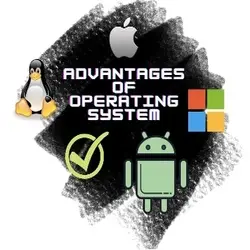
- It is helpful in monitoring and regulating the resources.
- It is easy to operate as it has a basic graphical user interface to communicate with your device.
- It is used to make contact between users and computer applications or hardware.
- The performance of a computer system is based on the CPU.
- The response time and throughput time of any process or program is fast.
- It can share different resources like fax, printer etc.
- It also provides a platform for a wide variety of applications such as system and web applications.
Functions of operating system
1. Process management
A program does nothing until its indications are executed by the CPU. A program in execution that is called a process. To fulfill its task, the process requires computer resources. There can be more than one process present in the system which can require the same resource at the same time. Hereby, the operating system has to manage all the processes and resources in a convenient and efficient manner.
2. Memory Management
Computer memory can be defined as a collection of some data represented in binary format. Memory can be classified into different categories on the basis of different functions. We will discuss each of them in detail later. A computer device that is capable of storing any information or data temporarily or permanently is called a storage device.
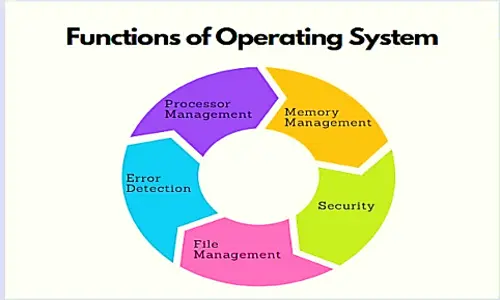
3. Input Device
Input devices enable the user to send data, information, or control signals to a computer. The Central Processing Unit (CPU) of a computer receives input and processes it to produce output.
4. Output Device
The output device displays the result of processing the raw data entered into the computer by means of an input device. There are many output devices that display output in a variety of ways, such as text, images, hard copies, and audio or video.
5. Deadlock Prevention
If we simulate a standoff with a table that is standing on its four legs we can also simulate four legs with four positions that when together cause a standoff. In spite of, if we break one of the legs of the table the table will surely fall.
How many types of operating system
- Batch OS – In batch operating system, there is no direct interaction between the user and the computer. Therefore, the user needs to prepare the job and save the offline mode to punch card or paper tape or magnetic tape.
- Time-Sharing OS – This is the type of operating system that allows us to connect multiple people located at different locations to share and use a specific system at the same time.
- Embedded OS – Embedded operating system is a specific purpose operating system used in embedded hardware configuration of computer systems.
- Multiprogramming OS – CPU is idle due to low CPU usage and waiting for I/O resource to that CPU. This refers to improper use of system resources. Therefore, the operating system introduces a new concept known as multiprogramming.
- Network OS-A network operating systems are an important class of operating systems that operate on servers using network equipment such as switches, routers, or firewalls to handle data, applications, and other network resources.
- Distributed OS – A distributed operating system provides an environment in which multiple independent CPUs or processors communicate with each other through physically separate computational nodes.
- Multiprocessing OS – This is the type of operating system that uses two or more Central Processing Units (CPUs). In a single computer system.
- Real-time OS– A real-time operating system is an important type of operating system used to provide services and data processing resources for applications in which the time interval required to process and respond to input/output should be such a small real-time system without any delay.
Conclusion
Finally, an operating system is software which manages computer hardware and software resources, and provides public services for computer programs. Operating system is a significant part of the system software in a computer system. Even though it is possible to interface software applications and hardware directly, the vast majority of applications in an operating system allow them to take advantage of the public library without worrying about the particular hardware details written.
FAQs
1. What are the basic of an operating system?
Operating System (OS) is basically a software program that manages and manages all the resources of the computer such as hardware and software. The first OS introduced in the early 1950s is known as GMO. An OS is responsible for managing, managing and coordinating the overall activities and sharing of computer resources. It acts as an intermediary between the users of the computer and the computer hardware.
2. What are the 3 essential components of an OS?
An operating system has three main functions: (1) managing the computer’s resources, such as the central processing unit, memory, disk drives and printers, (2) setting up the user interface, and (3) executing and running application software. Providing services, however, keep in mind that most of the operating system’s functions are hidden from the user; many essential tasks are done behind the scenes. Specifically, the first listed function, the management of the computer’s resources, is taken care of without the user being aware of the details.
3. What is Synchronization OS?
Observation. Process synchronization or synchronization is the way by which processes sharing the same memory space are managed in an operating system. It helps to maintain data consistency by using variables or hardware so that only one process at a time can make changes to the shared memory.
4. What is kernel mode in OS?
Kernel mode, as we know that system mode, is one of the central processing unit (CPU) operating modes. Whereas processes run in kernel mode, they have unrestricted access to the hardware. And the mode is user mode that is a non-privileged mode for user programs.
5. What is the difference between OS and Kernel?
An operating system is one of the most important components that help in managing computer software and hardware resources.
The kernel is a key element of the OS that converts user queries into machine language. It’s like system software.
6. How many OS can be installed in one PC?
While most PCs have a single operating system (OS) built-in, it is also possible to run two operating systems on a single computer at the same time. The process is known as dual booting, and it allows users to switch between operating systems based on the functions and programs they are working with.
7. What is bootable software?
Normally, your computer boots its hardware with a bootloader. But it can also be booted from software. Bootable USB software allows you to copy hardware information to a disc image, or ISO, and copy that data to a single USB drive or pen drive, even if it’s using very little data.
8.Difference between OS and Windows
Difference between Operating System and Windows An operating system (OS) is a set of programs that contain instructions that work together to coordinate all activities between computer hardware resources. A stand-alone operating system is a complete operating system which works on a desktop computer, notebook computer, or mobile computing device.
